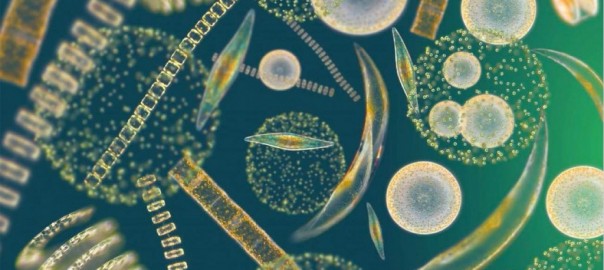Villar, E., Farrant, G.K., Follows, M.J., et al, 2015, Environmental characteristics of Agulhas rings affect interocean plankton transport. Science, Vol. 348 no. 6237, doi: 10.1126/science.1261447
Category Archives: Diversity and Biogeography

Life on the Edge – How shifting marine province boundaries could provide a new metric for global change
In their new competition theory paper, appearing in the 2014 issue of Biogeosciences, Dutkiewicz et al examine the sensitivity of the biogeography of nitrogen fixers to a warming climate and increased aeolian iron deposition in the context of a global earth system model. Continue reading Life on the Edge – How shifting marine province boundaries could provide a new metric for global change
Dutkiewicz, S., Ward, B. A., Scott, J. R., and Follows, M. J. (2014) Understanding predicted shifts in diazotroph biogeography using resource competition theory, Biogeosciences, 11, 5445-5461, doi: 10.5194/bg-11-5445-2014.

Mixing Down Diversity
Phytoplankton are an extremely diverse set of floating, microscopic organisms, which are freely transported by water movements (current, eddies, etc.) and make up the base of the oceanic food web. This work, published in the September issue of Limnology & Oceanography: Fluids & Environments, explores how their diversity is affected by dispersal by different scales of motions in the ocean. Continue reading Mixing Down Diversity
Levy, M., O. Jahn, S. Dutkiewicz, and M.J. Follows (2014), Phytoplankton diversity and community structure affected by oceanic disperal and mesoscale turbulence, Limnology and Oceanography: Fluids and Environment, 4, 67-84, doi: 10.1215/21573689-2768549.

Phytoplankton Diversity versus Productivity in the Ocean
by Sergio Vallina
Dept of Marine Biology and Oceanography, Institute of Marine Sciences, Barcelona
How does species richness vary with ecosystem productivity for marine phytoplankton? This question has fascinated biological oceanographers for decades. Phytoplankton communities are composed of many species of unicellular micro-algae. They are at the base of the marine trophic foodweb, growing and surviving by means of photosythesis by fixing CO2; a process known as primary production. Continue reading Phytoplankton Diversity versus Productivity in the Ocean
Publication
Vallina, S.M., M.J. Follows, S. Dutkiewicz, J. Montoya, P. Cermeno, and M. Loreau (2014),
Global relationship between phytoplankton diversity and productivity in the ocean, Nature Communications, 5, 4299, doi: 10.1038/ncomms5299
Publication
Prowe, A.E.F., M. Pahlow, S. Dutkiewicz, and A. Oschlies (2014), How important is diversity to capture environmental change responses in ecosystem models? Biogeosciences, 11, 3397–3407, 2014, doi: 10.5194/bg-11-3397-2014
Publication:
Barton, A.D., B.A. Ward, R.G. Williams, and M.J. Follows (2014), The impact of fine-scale turbulence on phytoplankton community structure. Limnology and Oceanography: Fluids and Environments, 4, 34-49, doi: 10.1215/21573689-2651533

Ocean microbes display remarkable genetic diversity
The smallest, most abundant marine microbe, Prochlorococcus, is a photosynthetic bacteria species essential to the marine ecosystem. An estimated billion billion billion of the single-cell creatures live in the oceans, forming the base of the marine food chain and occupying a range of ecological niches based on temperature, light and chemical preferences, and interactions with other species. But the full extent and characteristics of diversity within this single species remains a puzzle. Continue reading Ocean microbes display remarkable genetic diversity